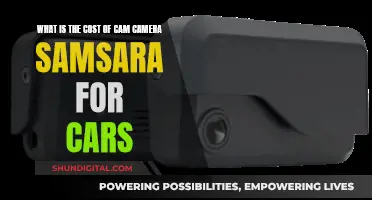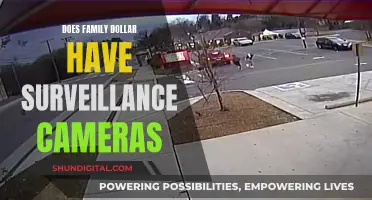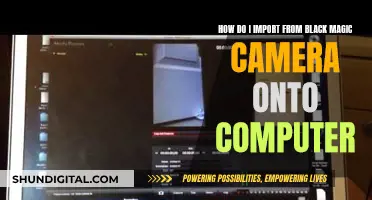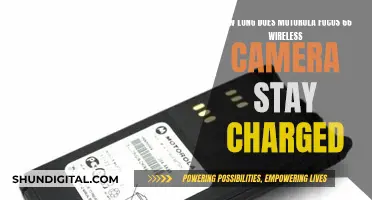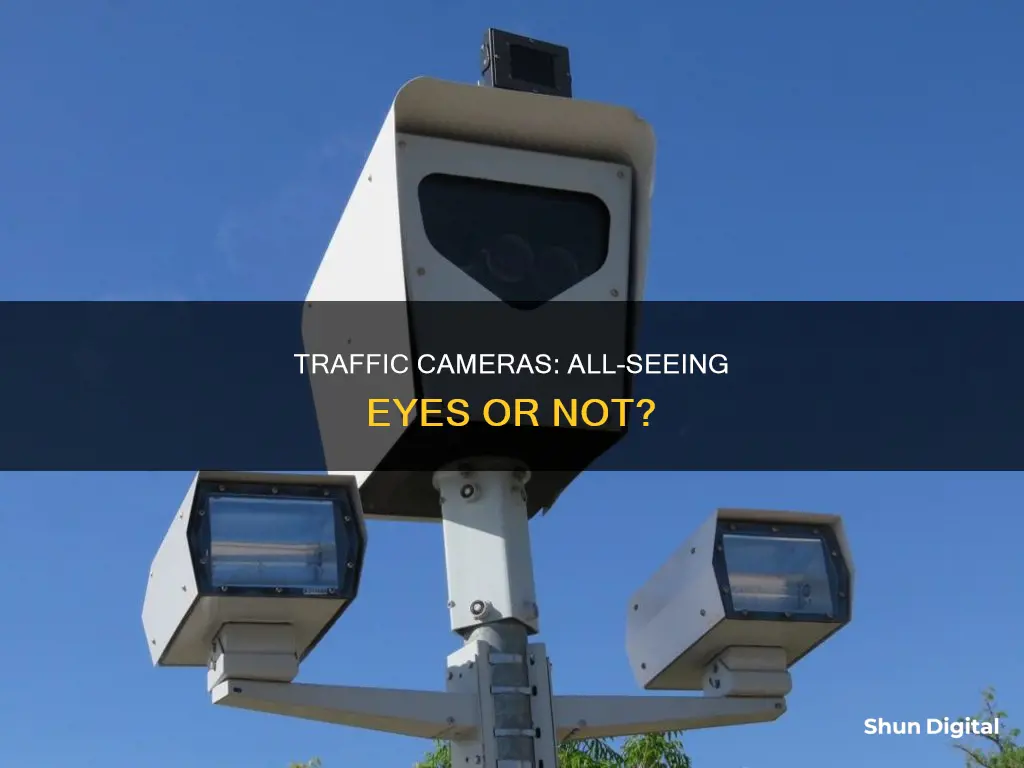
Traffic cameras are an increasingly common sight on roads across the United States, but do they catch everything? The short answer is no. While traffic cameras can be a useful tool for improving road safety and reducing accidents, they have limitations in terms of what they can capture and how long they can store footage. For example, traffic cameras are typically positioned to capture license plate numbers of vehicles that violate traffic laws, but this means they may not capture the driver's face or other important details such as a distracted driver leaning over to grab something from the floor. Additionally, traffic camera footage is often stored for only a few days or months before being deleted, so it's important to act quickly if you need to secure footage for a legal case. In summary, while traffic cameras can be a valuable tool for law enforcement and traffic management, they don't catch everything and it's important to understand their limitations.
| Characteristics | Values |
|---|---|
| Purpose | Monitoring traffic patterns, enforcing traffic signals, improving road safety, and documenting violations |
| Location | Intersections, highways, roadsides, street lights, traffic lights |
| Type | Red light cameras, speed cameras, stop sign cameras, school bus cameras, dummy cameras |
| Activation | Motion sensors, movement after a red light, vehicles exceeding speed limits |
| Data Storage | Footage stored for a few days to several months, depending on jurisdiction and purpose |
| Footage Duration | Typically around 12 seconds |
| Footage Content | License plate, vehicle, driver (varies by state), date, time, speed, location |
| Enforcement | Citations, tickets, moving violations, fines |
| Effectiveness | Reduce accidents, improve safety, generate revenue |
What You'll Learn

Traffic cameras don't capture sustained footage
Traffic cameras are a common sight in cities across the United States, and they are often positioned to capture footage of traffic violations, such as running red lights or speeding. However, it's important to note that these cameras do not always capture sustained footage.
The length of footage captured by traffic cameras varies depending on the type of camera and the purpose it serves. For example, red-light cameras typically capture a photo or around 12 seconds of video footage when a car moves through an intersection after the light has turned red. Similarly, speeding cameras usually capture about 12 seconds of footage when a vehicle exceeds the speed limit. School bus cameras, which have become increasingly popular to prevent drivers from passing stopped school buses illegally, also tend to capture short footage of any offending vehicles.
While traffic cameras can provide valuable evidence in the event of a car accident, they may not always capture the specific moments or details needed to determine liability. For instance, if you need to demonstrate that a distracted or intoxicated driver caused an accident by swerving into your lane, the traffic camera may not have recorded the necessary footage. This is because traffic cameras are usually positioned to capture license plate numbers rather than the interior of vehicles.
Furthermore, continuously streaming traffic cameras used by law enforcement and government agencies for monitoring traffic patterns often do not record footage at all. Additionally, the length of time that traffic camera footage is stored varies, with some databases retaining footage for only a few days before deletion. Therefore, those seeking to obtain traffic camera footage following an accident should act quickly and consider consulting a lawyer to navigate the complex process of acquiring the evidence.
Streaming Your Camera to Your Computer: The Finepix Way
You may want to see also

They don't aim inside vehicles
Traffic cameras are usually installed to monitor traffic flow and detect motoring offences such as speeding, running red lights, or using a bus lane without authorisation. They are typically mounted beside or over a road or installed in an enforcement vehicle. While these cameras are useful for monitoring traffic and reducing accidents, they don't aim inside vehicles.
Traffic cameras usually capture short video footage or photographs, triggered by movement after a light turns red. They are positioned to capture the license plates of violating vehicles, which is vital for issuing traffic citations. However, this positioning means that traffic cameras generally don't aim directly inside vehicles.
Distracted driving, such as leaning over to grab something from the seat or floor, or texting, is a common cause of accidents. Unfortunately, traffic camera footage typically won't show these actions as the cameras are not aimed to capture the interior of vehicles.
Similarly, in the case of an accident involving an intoxicated driver, the traffic camera footage may show the driver running a red light, but it may not include footage of them swerving in the road. It also might not show which person was driving if a passenger swaps places with the driver.
Overall, while traffic cameras can be useful for monitoring traffic and reducing certain types of accidents, they don't aim inside vehicles and therefore may not capture all the necessary details in the event of an accident or traffic violation.
Focusing on Infinity with Lumix: A Step-by-Step Guide
You may want to see also

Footage is often stored for a few days
The length of time that traffic camera footage is stored depends on several factors, including the jurisdiction, the purpose for which it was recorded, and the storage technology used. In general, most jurisdictions keep the footage for a period of 30 to 90 days before it is deleted or overwritten. However, there is no standard time frame, and the storage duration can vary from one jurisdiction to another. For example, in New York City, the Department of Transportation stores traffic camera footage for 30 days before deletion, while in Los Angeles, California, traffic camera footage is retained for up to five years.
The storage technology employed also influences the duration of footage storage. Some systems utilise hard drives or solid-state drives with limited storage capacities, necessitating frequent data deletion or overwriting. Conversely, cloud-based storage solutions offer virtually unlimited storage capacity.
Data protection regulations, such as the European Union's General Data Protection Regulation (GDPR), also play a role in determining how long traffic camera footage can be stored. Under GDPR, personal data must be deleted after a specific period unless there is a legitimate reason for retention.
It is worth noting that traffic camera footage is often time-sensitive, and some organisations may only retain it for a few hours or days. Therefore, prompt action is required if one wishes to access or preserve this type of footage for legal or investigative purposes.
Accessing Camera Debug Mode in Elite Dangerous
You may want to see also

Dummy cameras are sometimes used
The use of dummy cameras is controversial. Some argue that they serve no purpose other than to distract motorists and that they have the potential to cause collisions. In 2018, an entrepreneur in the UK was banned from selling a dummy speed camera by police, who warned that he could face jail time if one of his devices distracted a driver and led to an accident. Proponents of dummy cameras, however, argue that they can be just as effective as active cameras at moderating vehicle speeds, as long as drivers don't know whether the camera is real or not.
The presence of dummy cameras can be difficult to detect, and even if a driver suspects that a camera is inactive, it can still serve as a deterrent. Some argue that the mere presence of a camera housing, whether it contains a real camera or not, can encourage drivers to slow down and obey the speed limit. However, others maintain that inactive cameras are confusing and serve no real purpose. There is also the risk that a driver may be more likely to speed if they know that a particular camera is inactive, potentially increasing the risk of accidents.
Overall, the use of dummy cameras as a traffic enforcement strategy is a divisive issue. While they can be a cost-effective way to expand the coverage of speed camera programmes, there are concerns about their potential to distract or confuse drivers and contribute to accidents. As a result, some have called for the removal of inactive cameras, while others defend their continued use as a necessary measure to improve road safety.
Finding the Camera Raw Dialog Box
You may want to see also

They can be used to establish liability
Traffic cameras are usually installed to deter people from breaking road rules, such as running red lights or speeding. They are also useful in resolving car accident disputes and establishing liability.
Traffic camera footage can be used as evidence in court to support traffic violation citations, especially for red light and speeding infractions. This footage can be pivotal in determining fault and liability after collisions at intersections. It can also help establish liability in an auto accident, especially in cases of disputed liability. For example, in the case of a T-bone collision, traffic camera footage may show which driver ran the red light, and can, therefore, be used to assign liability.
In some states, red light cameras are set up to only capture footage of violating vehicles' rear license plates, while other states require an actual photo of the driver. In Washington state, for instance, the law prohibits a picture or video of the driver's face, so the violations recorded are of the rear of the vehicle. However, other states may differ and have a view of the driver.
In most jurisdictions, the registered owner of the vehicle is considered legally responsible for the vehicle's use, even if someone else is driving. However, many jurisdictions provide a process for the owner to identify the actual driver responsible for the violation.
Controlling Your Camera: Computer Connection Tips
You may want to see also
Frequently asked questions
No, traffic cameras do not record everything. They are usually positioned to capture the license plates of vehicles that violate traffic laws.
Traffic cameras are usually not aimed inside the vehicle. They may not capture footage of a distracted or intoxicated driver.
Traffic camera footage is typically stored for a few days to several months, depending on the jurisdiction and purpose.


